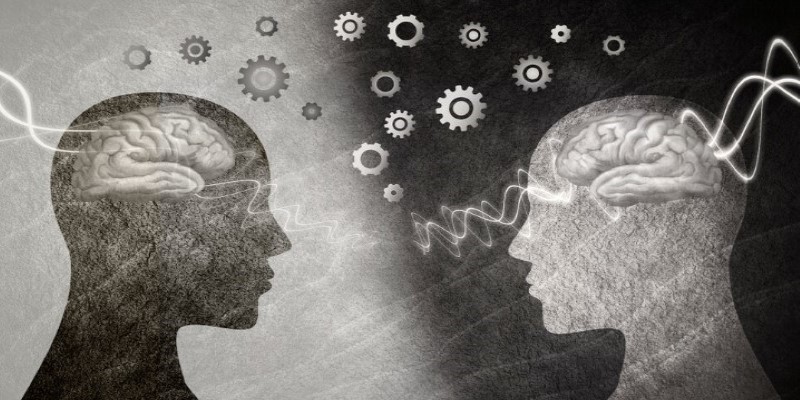The Digital Approach to ADHD: Understanding Online Treatment Options
Attention-Deficit/Hyperactivity Disorder (ADHD) is a neurodevelopmental disorder that affects both children and adults. Characterized by symptoms such as inattention, hyperactivity, and impulsivity, ADHD can significantly impact daily life, including academic, professional, and personal relationships. Traditionally, treatment options have included medication, behavioral therapy, and lifestyle adjustments.
However, the rise of technology and telehealth has opened up new avenues for managing ADHD. In this article, we will explore ADHD treatment online, highlighting its benefits, challenges, and practical approaches to help individuals effectively manage their symptoms in the digital age.
The Rise of Online ADHD Treatment
The demand for ADHD treatment online has grown considerably in recent years, especially with the increasing awareness of mental health issues and the convenience offered by digital platforms. Many individuals find it challenging to access traditional therapy due to factors such as geographical limitations, time constraints, or personal preferences. Online treatment options, which include teletherapy, online support groups, and mobile health applications, provide an alternative that can fit more easily into a busy lifestyle.
As we navigate through 2024, various platforms are offering tailored ADHD treatment solutions. From virtual therapy sessions to educational resources and medication management tools, the internet has become a valuable resource for those seeking assistance in managing ADHD.
Types of Online ADHD Treatment
Online ADHD treatment typically adds several therapeutic modalities, allowing patients to choose what works best for them. Some common types of treatment include:
Cognitive Behavioral Therapy (CBT)

Cognitive Behavioral Therapy (CBT) is a widely used therapeutic approach for ADHD. CBT focuses on identifying negative thought patterns and behaviors and replacing them with healthier alternatives. In an online setting, therapists use videoconferencing tools to conduct sessions, allowing for real-time interaction. Homework assignments, journaling, and interactive exercises may also be utilized to reinforce learning between sessions.
Mindfulness and Relaxation Techniques
Mindfulness practices, such as meditation and deep breathing exercises, can be particularly effective in helping individuals manage impulsivity and improve focus. Online platforms often provide guided mindfulness sessions that can be accessed anytime, making it easy to integrate these practices into daily life.
Skills Training
Online skills training programs focus on developing organizational, time-management, and problem-solving skills. These programs may include interactive modules, worksheets, and video demonstrations, allowing patients to practice skills at their own pace. Many online platforms also provide tools to help track progress and set goals.
Support Groups
Participating in online support groups can be an invaluable aspect of ADHD treatment. These groups provide a sense of community and connection, allowing individuals to share experiences and strategies for managing symptoms. Online platforms facilitate these discussions through forums, chat rooms, or live video sessions.
How Online ADHD Treatment Works?
Engaging in online ADHD treatment typically begins with a comprehensive evaluation conducted by a licensed mental health professional. This assessment is crucial for accurately diagnosing ADHD and developing a tailored treatment plan. Most providers will evaluate video conferencing, where they can assess the individual's symptoms and discuss their medical history.
Once diagnosed, individuals can choose from a range of treatment options. Online therapy for ADHD may involve cognitive-behavioral therapy (CBT), mindfulness practices, or skills training aimed at improving organizational and time-management abilities. These therapeutic approaches can be adapted to the online format, often utilizing interactive tools and resources to enhance the therapeutic experience.
In addition to therapy, online treatment may also include medication management. Many telehealth platforms enable healthcare providers to prescribe and monitor medications used to treat ADHD, such as stimulants and non-stimulants. Patients can receive prescriptions without needing to visit a doctor's office, streamlining the process of obtaining necessary medication.
Benefits and Challenges of ADHD Treatment Online
Online ADHD treatment has gained popularity as a flexible and accessible option for managing attention-deficit/hyperactivity disorder (ADHD). While it offers several advantages, it also presents distinct challenges. Heres a concise look at the benefits and challenges of online ADHD treatment.
Benefits of Online ADHD Treatment
Accessibility and Convenience: One of the biggest benefits is accessibility. Patients can consult healthcare providers from home, saving travel time and making it easier for those in remote areas to access care.
Privacy and Comfort: Online therapy allows for greater privacy, helping to reduce the stigma around mental health treatment. Many individuals feel more comfortable discussing their symptoms in their own environment, which can lead to more honest communication.
Variety of Treatment Options: Online platforms offer diverse treatment modalities, including cognitive-behavioral therapy (CBT), skills training, and medication management. This variety enables patients to select approaches that best fit their needs, often accompanied by educational resources and support groups.
Reduced Costs: Online treatment can be more cost-effective than traditional therapy. Many telehealth services offer competitive pricing or subscription models, and patients save on travel costs. Insurance coverage for online therapy is also becoming more common.

Challenges of Online ADHD Treatment
Lack of In-Person Interaction: The absence of face-to-face interaction may hinder the therapeutic relationship for some individuals. Non-verbal cues, important for building rapport, can be missed in virtual settings.
Technical Issues: Reliance on technology can lead to disruptions. Internet connectivity issues or software glitches can interfere with sessions, creating frustration for patients and providers alike.
Motivation and Accountability: The comfort of home can lead to a lack of accountability, making it easier for patients to skip sessions. Staying motivated requires effort, as the structure of in-person visits is absent.
Limited Physical Assessments: Certain assessments may be difficult to conduct online. Clinicians may miss important physical cues that could inform treatment, making in-person evaluations necessary for complex cases.
Conclusion
ADHD treatment online is a valuable and evolving option for individuals seeking effective management of their symptoms. With increased accessibility, diverse resources, and the convenience of teletherapy, online treatment has become an essential part of the mental health landscape in 2024. While challenges exist, the benefits often outweigh them for many individuals.
By considering various strategies, choosing the right provider, and combining online treatment with lifestyle changes, individuals with ADHD can enhance their quality of life and successfully manage their symptoms.












